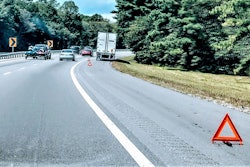Don’t plan like you’re ‘herding cats’
What’s a driver to do when trying to corral their usable hours? These are very individual management problems and the time, tasks and goals need to be defined. If you don’t do that, you’ll indeed feel like you’re herding cats, going in every direction except toward where you want to end up.
There’s a huge difference in the scheduling and tasking priorities of a self-dispatched owner-operator and a company driver paid by the mile. Working with spot rates, percentage pay or direct contracts, the owner has decision-making and negotiating power combined with the right of refusal. (Speaking of the last, learn to say no!)
The company driver doesn’t typically have this luxury, nor the responsibility that comes with it.
As an owner-op, I always learn as much as I can about the customers, commodities and working environment when it comes to any load. It’s my responsibility to ask the tough questions — that includes the time needed, and expected, to provide the services — before accepting the contract.
Find yourself sitting in a dock with your minutes, then hours ticking off. At that point, how can you expect to have any ability to renegotiate the deal when you have the next job scheduled and the dominoes begin falling?

I’ll raise this question for the sake of illustrating a way to use task definition to advantage: If the customer has told you how long loading or unloading is expected to take, shouldn’t the end of that period define where detention compensation starts? It’s common for rate confirmations to state that detention starts after two or three hours, but if a facility expects to do well better than that, why not try to negotiate a better deal and thus incentivize speedy load and unload?
Negotiations around detention timing can also undergird the extent to which you’re able to plan out and exercise greater control over your hours status.
Consider personal conveyance, or off-duty driving. The most recent adjustment to the official guidance around personal conveyance offers the option to drive off-duty loaded or empty from a customer location to the nearest safe parking place. As an owner, if you’ve released yourself from duty at a customer and are near the end of your working day, with no responsibility for loading and unloading, continue off-duty to the nearest safe haven for rest. In effect, use the change as an asset to your advantage.
‘If the wheels aren’t turning, I’m not earning’
We all know that one. Most of us have probably actually said it. For too many years, we’ve viewed time off as a liability. Do you see time not driving as lost time? No matter how a person calculates their hours of service, logically there is no way to drive or work more hours than the time off-duty we need to recover to care for ourselves. Having listened closely in my mentoring of drivers of all stripes now for many years, it’s easy to recognize the anxiety our instinct to maximize drive time creates in the off periods, when we really should be enjoying time relieved from the responsibility of work and business decisions.
Whether recognized or or not, we all develop deep-seated habits, personal mental processes to only prioritize tasks that make us feel good about ourselves. This is where our business and personal financial expectations and commitments collide. You can just as easily call these habits behavioral or process addictions.
Drivers and owners feeling the pressure thus try and negate revenue losses by driving more miles, more miles, more hours to balance income with the expenses. It’s a vicious cycle, a dog chasing its tail. The more we drive, the more we dilute our own value even as we want to believe we’re just one good week away from a return to what we imagine profits should be.
Don’t let the next load you haul be your last. Develop a personal and business plan for the whole game, not just the hurry-up, sudden-death play of all or nothing. Look around. Many very successful drivers and owners have changed and learned to adjust their business model.
Less, ultimately, can be more in the end.














